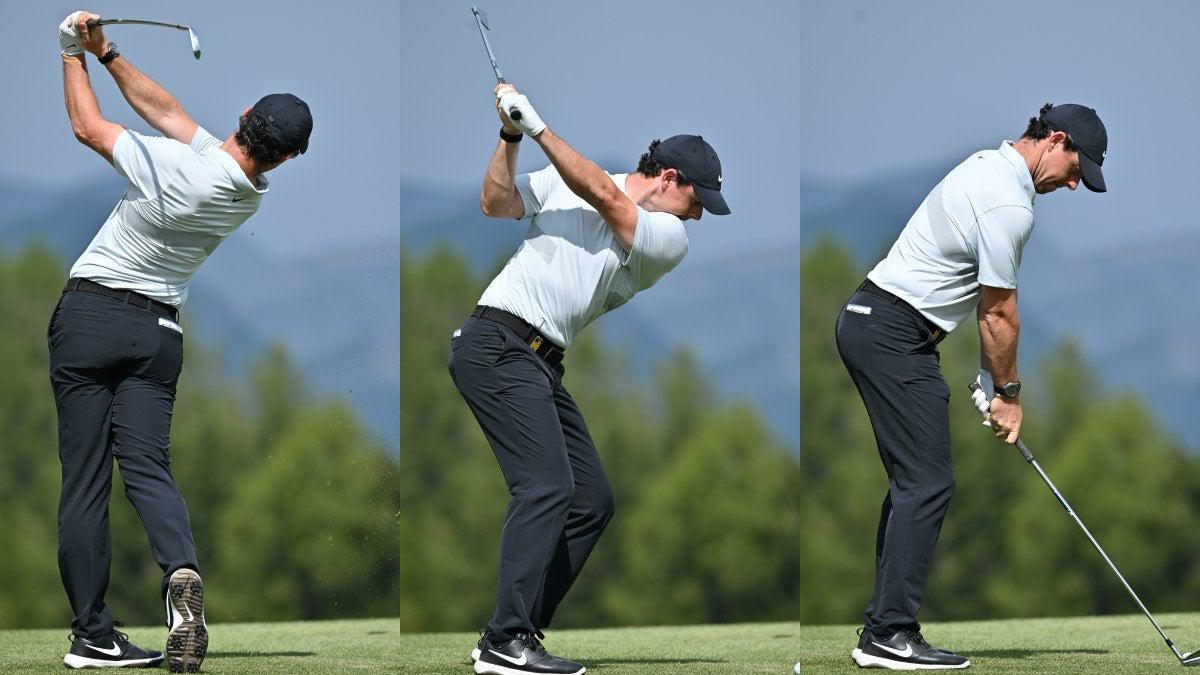The golf swing is a complex and dynamic movement involving multiple body segments. Kinematic analysis, the scientific study of motion, provides valuable insights into the mechanics of the golf swing and can aid in player development and injury prevention. This article offers a comprehensive review of the kinematic characteristics of the golf swing, examining key parameters such as clubhead speed, swing plane, and joint kinematics. We delve into the contributions of different body segments to overall swing dynamics, and highlight the influence of swing type, golfer characteristics, and equipment on kinematic variables. Furthermore, we explore methodologies for kinematic analysis, including motion capture, video analysis, and sensors, and discuss their applications in both research and practical settings. Through this in-depth exploration, we aim to enhance the understanding of golf swing biomechanics and inform future research, instruction, and performance optimization.
Historical Evolution of Kinematic Analysis in Golf
Initial attempts to analyze the golf swing using kinematic principles emerged in the late 19th century. Edward Muybridge‘s pioneering work with sequential photography captured the dynamic nature of the golf swing, laying the foundation for future studies. These early efforts employed rudimentary techniques and were limited by the technology available at the time.
In the 20th century, advancements in cinematography and computer technology revolutionized kinematic analysis. Jim van Biezen‘s sophisticated 2D and 3D motion capture systems enabled researchers to quantify and visualize swing mechanics with unprecedented precision. These methods led to a deeper understanding of the kinematic relationships and joint interactions involved in the golf swing.
Today, kinematic analysis plays an integral role in both research and the coaching process. Advanced motion capture technologies, such as Vicon Nexus and Kinect, offer high-speed, multi-camera systems that generate detailed 3D representations of the golf swing. These systems have become indispensable tools for identifying biomechanical deviations and optimizing performance. Besides the technological advancements mentioned, the use of mathematical modeling and statistical techniques has also contributed to the development of kinematic analysis in golf. Recent research has focused on the application of machine learning and artificial intelligence to automate swing analysis and provide personalized feedback to golfers.
Current Methodologies for Data Collection and Analysis
The emergence of advanced data collection and analysis techniques has revolutionized the field of kinematic analysis in golf swing biomechanics. These methodologies provide researchers with unprecedented opportunities to capture and interpret complex movement patterns, enabling a deeper understanding of the swing’s biomechanical characteristics.
One prominent method employed is motion capture technology, utilizing an array of high-speed cameras to track the movement of reflective markers placed on the golfer’s body. This system allows for the reconstruction of three-dimensional trajectories, providing detailed information on joint angles, velocities, and accelerations throughout the swing. The accuracy and precision of this technique enable researchers to identify subtle changes in movement patterns, offering valuable insights into performance enhancements.
Methodologies
- Motion Capture:
- High-speed cameras track reflective markers
– Detailed 3D kinematic data
– Joint angles, velocities, and accelerations
- Force Plate Measurement:
- Measures ground reaction forces
– Insights into body weight distribution
– Analysis of impact forces
- Electromyography:
– Records muscle activity
– Reveals activation patterns during various phases of swing
Key Kinematic Parameters and Their Influence on Performance
Kinematic parameters, which describe the motion of the body and segments during the golf swing, are crucial in understanding performance. Key parameters include:
- Clubhead Speed: Determined by the velocity of the clubhead at impact, this parameter influences ball distance and trajectory. Faster clubhead speeds typically result in longer shots.
- Impact Factor: Measures the efficiency of energy transfer from the golfer to the ball. A high impact factor indicates optimal timing and swing mechanics, contributing to higher ball speed and distance.
- Swing Plane: Describes the three-dimensional path of the clubhead through the swing. A consistent and repeatable swing plane is essential for accuracy and ball control.
Influence on Performance
These kinematic parameters have a profound impact on overall swing performance:
- Clubhead Speed: Directly related to ball distance, with higher clubhead speeds producing farther shots.
- Impact Factor: Directly related to ball speed, with higher impact factors resulting in greater distance and lower spin rates.
- Swing Plane: Consistency and repeatability of the swing plane contribute to improved ball direction, dispersion, and workability.
| Kinematic Parameter | Influence on Performance |
|—|—|
| Clubhead Speed | Ball distance |
| Impact Factor | Ball speed and spin |
| Swing Plane | Ball direction, dispersion, and workability |
Integrating Biomechanical Principles to Enhance the Golf Swing
Understanding the biomechanics of the golf swing is crucial for maximizing performance and minimizing injury risk. Leveraging these principles, golfers can identify and correct inefficiencies in their technique, leading to increased power, accuracy, and consistency.
Optimizing the golf swing involves analyzing key kinematic parameters such as joint angles, velocities, and forces. By measuring and interpreting these variables, coaches and players can identify areas for improvement. Slow-motion video analysis and motion capture systems provide detailed information about swing dynamics, allowing for a comprehensive assessment. For instance, a golfer may discover that they are not fully extending their hips during the downswing, resulting in a loss of power.
Furthermore, biomechanical principles play a significant role in selecting appropriate equipment. Golf clubs with specific shaft flexes, head weights, and grips can influence swing dynamics. By matching the club to the individual golfer’s biomechanics, it is possible to optimize clubhead speed and trajectory. For example, golfers with high swing speeds may benefit from clubs with stiffer shafts, while golfers with slower swing speeds may perform better with more flexible shafts. By incorporating biomechanical principles, golfers can make informed equipment choices, further enhancing their performance on the course.
* Future Directions and Emerging Technologies in Kinematic Analysis
Future Directions and Emerging Technologies in Kinematic Analysis
The future of kinematic analysis holds exciting prospects, propelled by advancements in technology and scientific methods. Notably, the integration of artificial intelligence (AI) is poised to revolutionize the field. AI algorithms can analyze vast amounts of kinematic data, identifying patterns, and predicting performance outcomes with unprecedented accuracy. This has implications for optimizing technique, injury prevention, and talent identification.
Moreover, the emergence of mobile and wearable technologies offers new opportunities for real-time kinematic assessment. These devices can be used to capture and analyze movement data in naturalistic settings, providing insights into the dynamics of everyday activities. Such technologies facilitate personalized training and rehabilitation programs, empowering individuals to track their progress and make informed decisions.
Furthermore, the development of novel sensors and imaging techniques promises to enhance the accuracy and precision of kinematic measurements. High-resolution cameras, motion capture systems, and inertial sensors enable researchers to capture and analyze subtle movement patterns with unprecedented detail. This advancement will contribute to a deeper understanding of human movement and pave the way for more sophisticated kinematic models and interventions.
| Emerging Technology | Potential Applications |
|—|—|
| Artificial Intelligence (AI) | Pattern recognition, performance prediction, injury prevention |
| Mobile and Wearable Technologies | Real-time analysis, personalized training, rehabilitation |
| Advanced Sensors and Imaging Techniques | Increased precision, detailed movement analysis |
Outro
This review has provided a comprehensive analysis of the kinematic aspects of the golf swing, integrating insights from various studies and methodologies. The examination encompasses the key phases of the swing, including the backswing, transition, downswing, impact, and follow-through. The analysis has highlighted the intricate interplay between different body segments, temporal sequencing, and kinematic parameters.
Future research directions could focus on exploring the relationship between kinematic variables and performance outcomes, utilizing advanced motion capture systems for more detailed analysis. Additionally, examining the influence of biomechanical factors on injury prevention and golf swing optimization could further enhance our understanding and contribute to the golfer’s performance and well-being. By continuing to investigate the kinematics of the golf swing, we can deepen our knowledge and refine our strategies for improving golf technique and enhancing overall performance.





